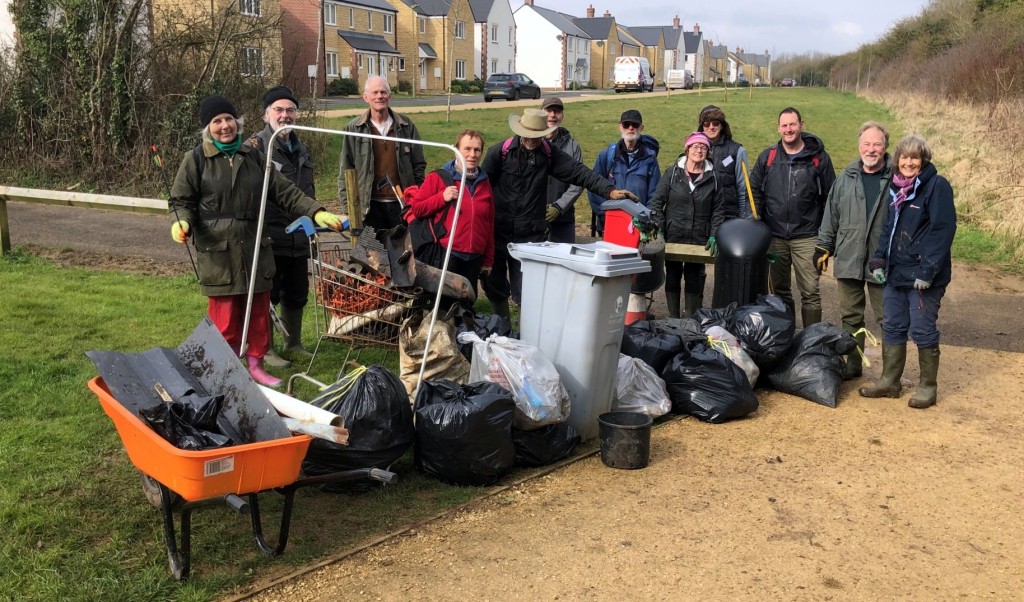(Produced every two months, starting in March 2024)
August 2024
WWV Committee Meeting Update – Thursday 29th August 2024
• Reviewing of the WWV leaflets and website
• Replace and re-site the black corrugated sheets for monitoring mice and reptiles within DPW following a reptile input from WODC to one of our members
• Damage caused to trees and bushes within DPW and the issue of fires at the outside classroom (Fire brigade called out on one occasion recently)
• Arrange WWV visit to Gibbets Hill (Wychwood Forest Trust site) in Witney for 09/09/2024
• Colwell Brook – Testing
• Meet and liaise with Rachel Crook’s WODC replacement
DPW and DP South
The squirrels in DPW North have been very busy stripping the bark off some of our trees and seem particularly partial to the silver birch trees. They feed on the nutritious sap beneath the bark, unfortunately severe damage can be caused which can kill the tree or provide an entry point for other tree pests and diseases.
Our notice board message which states ‘Protect wildlife, take nothing but photographs, leave nothing but footprints’, is being well and truly ignored at the moment. Litter is a daily problem at the seat at the south end of the wood. A ‘No Litter’ sign lasted less than thirty six hours before being destroyed. A large camp/hide was built at the north west end of the wood causing damage to trees and bushes nearby and finally we have problems with fires again at the outside classroom which, on one occasion, resulted in the fire service being called out. Hopefully once the summer holidays are over and the weather changes, these issues will resolve themselves.
The animals, despite the above issues, continue to be active within the wood, with our fox and the badger, who now appears to be a regular visitor to DPW. The three legged muntjac has found a new partner, a young doe. Unfortunately his previous partner, the muntjac with only one eye, has not been seen now for many months. The mice, rabbits and squirrels are also keeping busy.
We have also been very busy over the last few weeks with cutting back prior to the arrival of the grass cutters, path clearing and litter picking. Within DP South the path through to the small grass area was almost impassable (As can be seen below) as was the path round the dip, so a great deal of work has been undertaken to open up the paths again and to ensure that all paths are accessible.
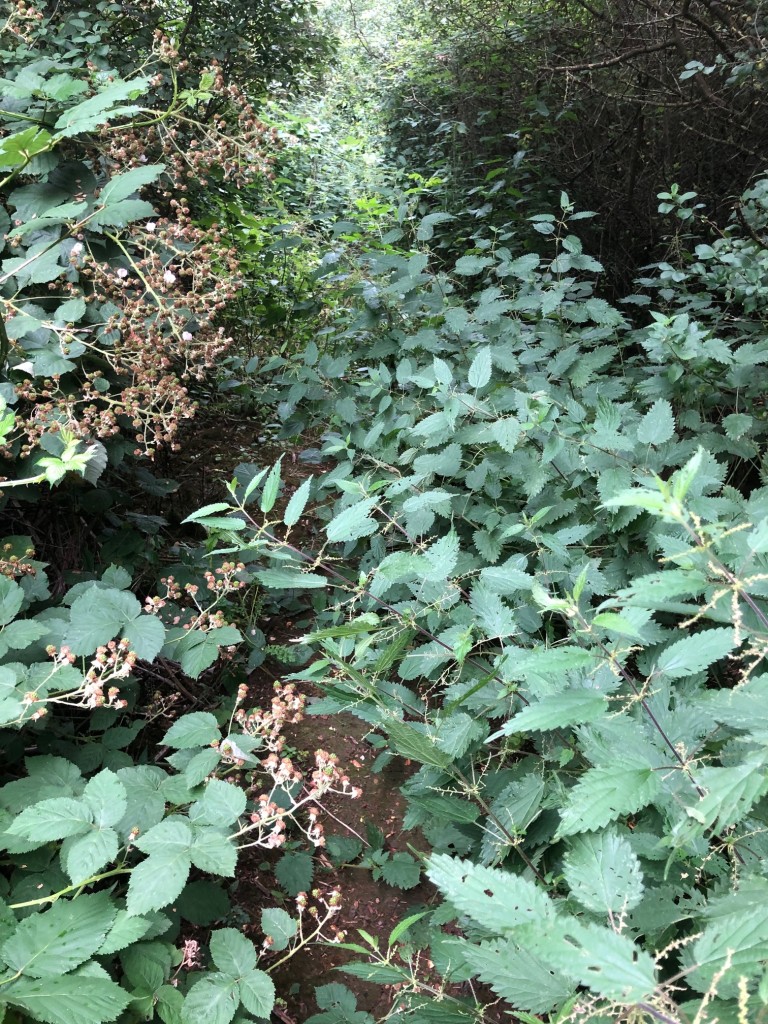
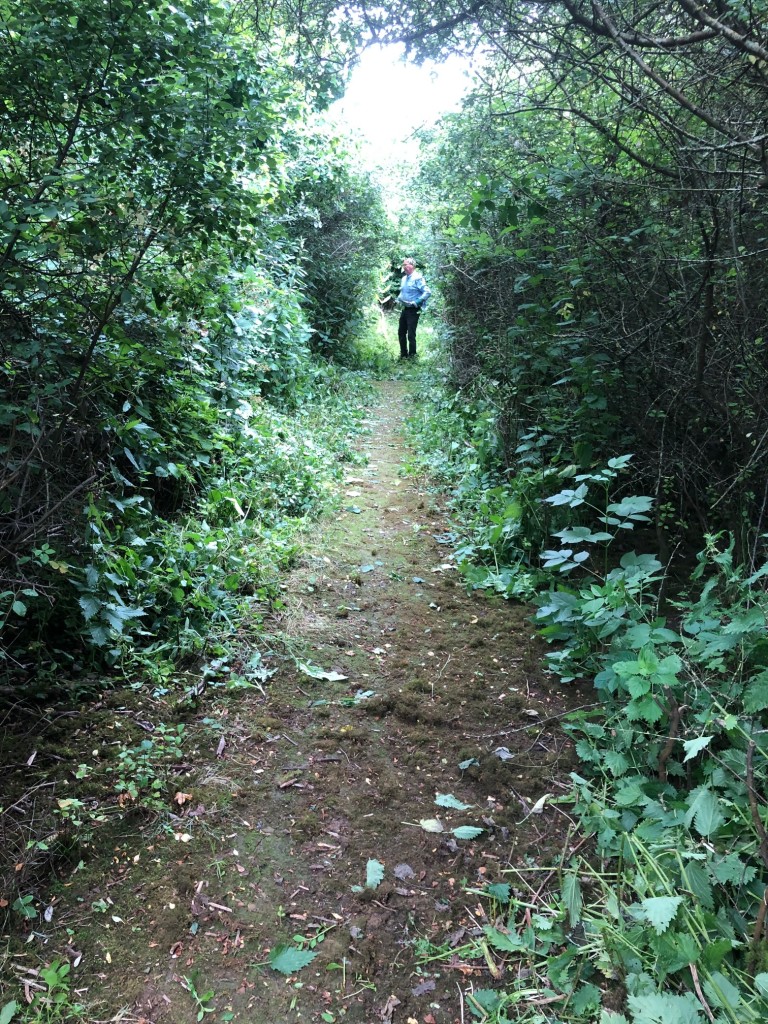
There have been many ‘Lords and Ladies’ within DP South this year and they are quite striking with their bright red berries.

Also within the wood we have seen a great deal of new growth following our coppicing of hazel and the cutting back of dogwood over the last two years, as shown below.

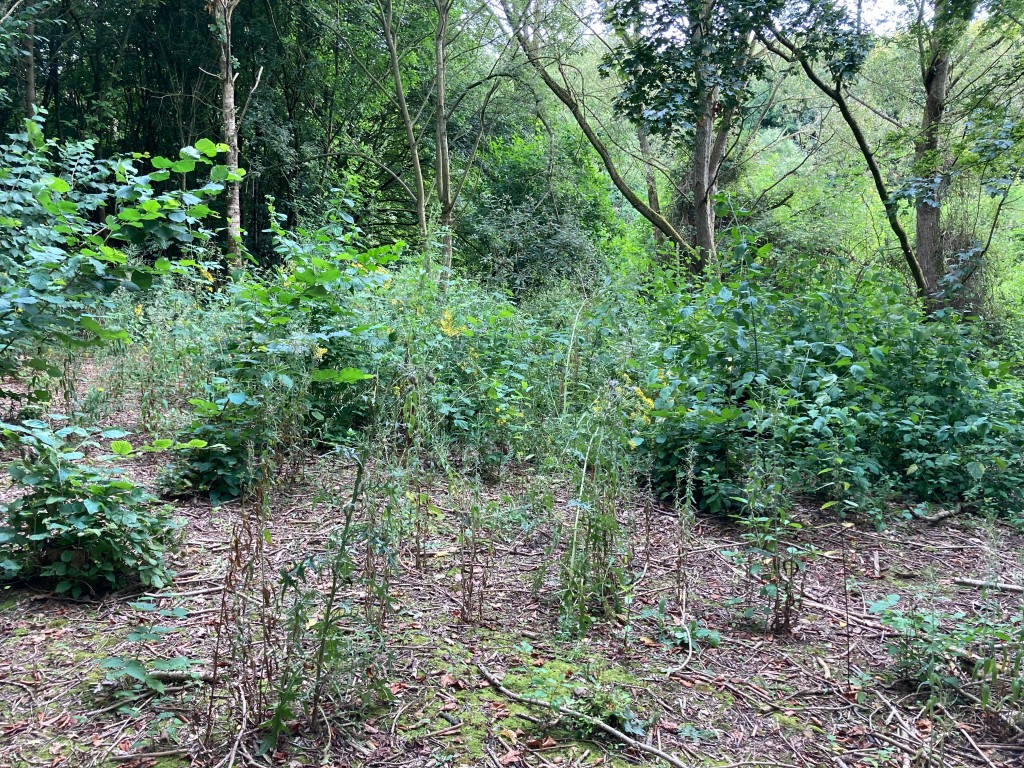
If you have been to DP South during August, early in the morning, you may well have heard a rather strange sound, similar to a loud squeaking noise. The noise emanates from two sparrow hawks chatting to each other and getting rather upset at the close attention they are receiving from the local magpies. Below are some lovely photographs of them, taken recently.



In early August two of our members, Tony and Pete, undertook ‘Kick Sampling’ water testing within the Colwell Brook to ascertain whether there was much life within the stream and to see how healthy the stream is. Tony has circulated the results which were most interesting showing there is life within the stream which, hopefully, will give us something to build on and to now monitor on a regular basis.
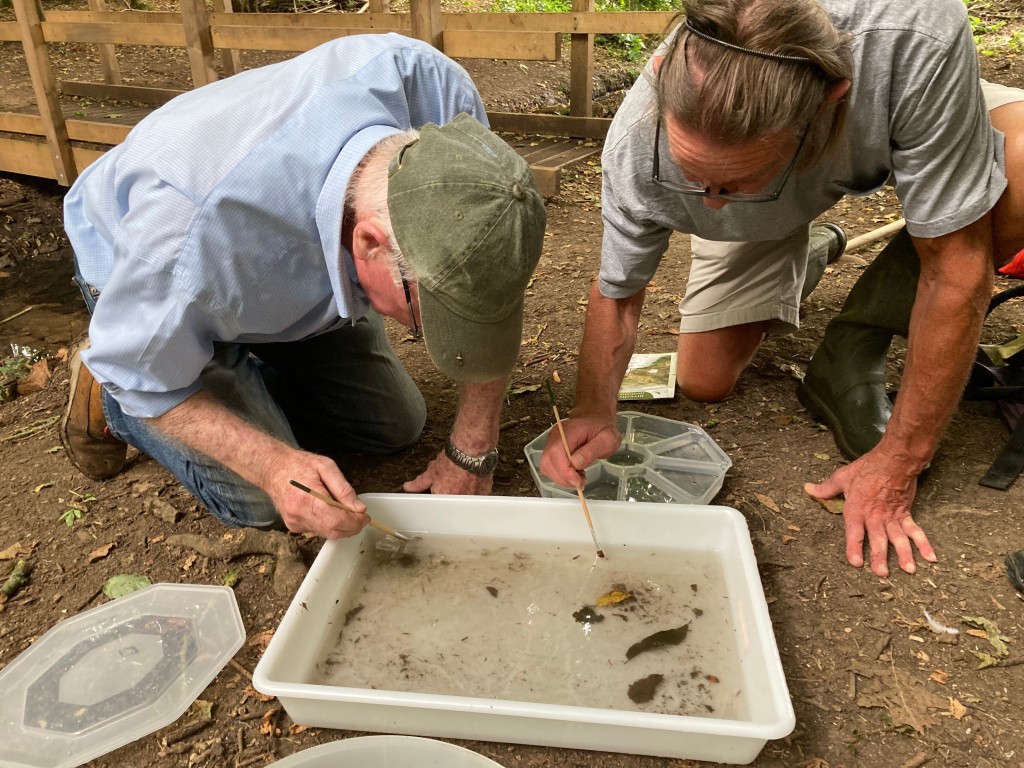
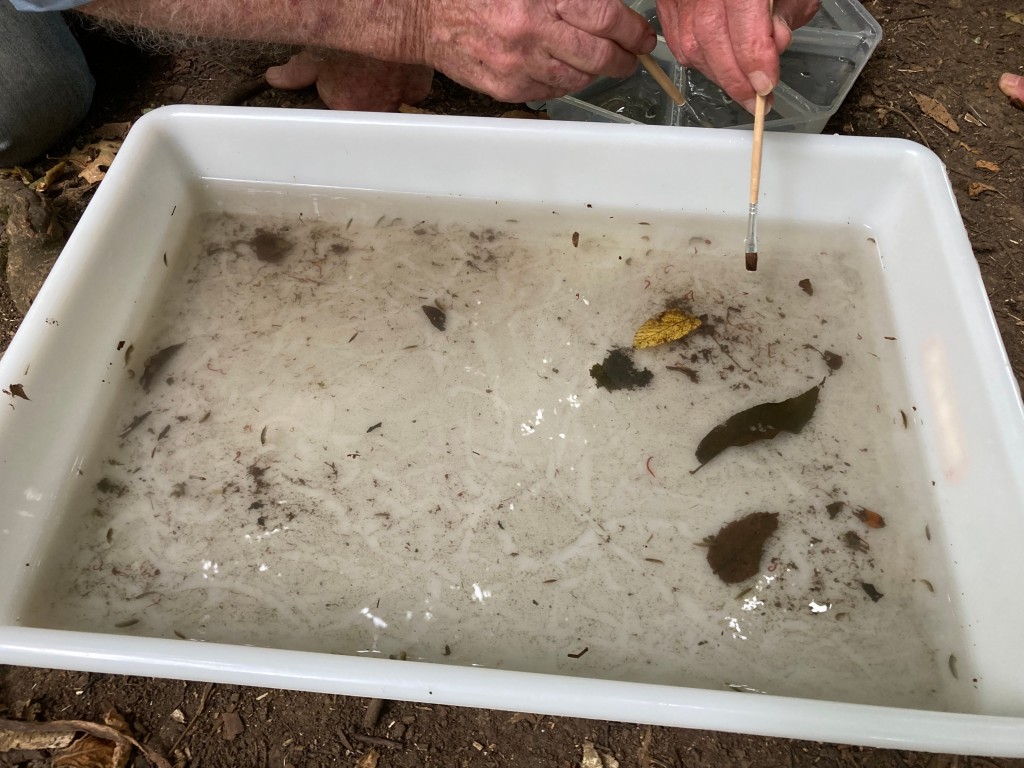
If you walk along the bride path, next to DP South, part of a round concrete structure has been uncovered following the path improvements:
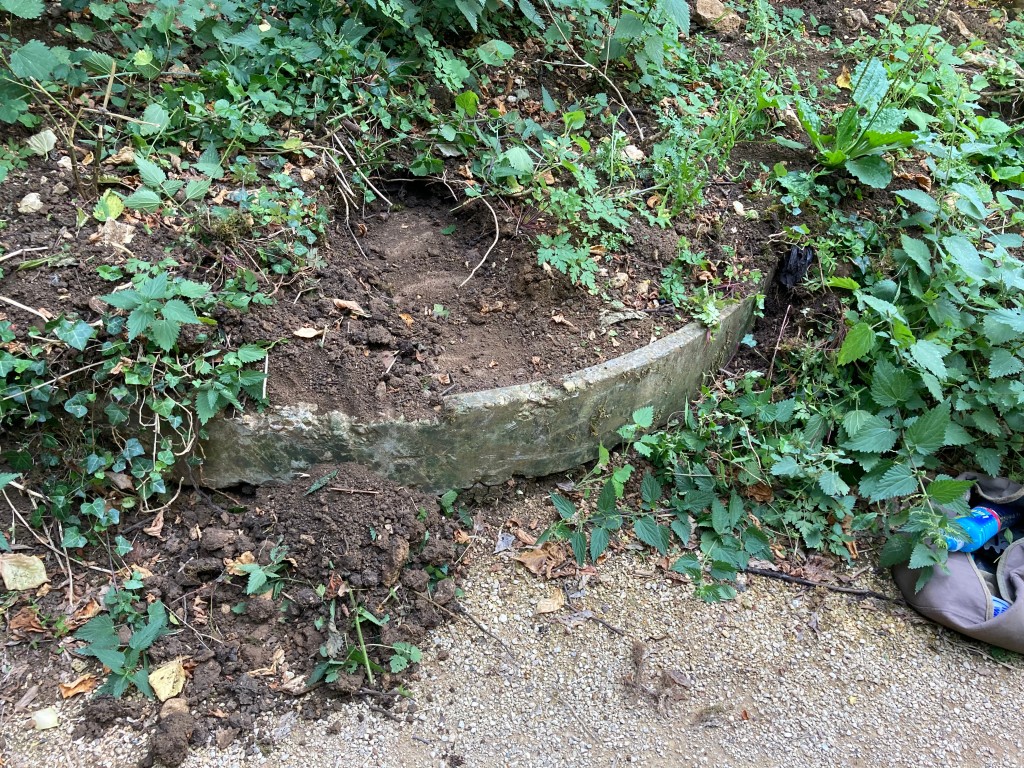
…and we wondered whether anyone has any idea what it is? The location is just outside the old Deer Park wall boundary and would have been on the edge of the old Witney airfield.
July 2024
On Monday 24th June 2024 we held our well-attended AGM, and the Chair provided an excellent overview of the great work you have all done over the last twelve months. This was followed by a very interesting talk from Neil Clennell of the Wychwood Forest Trust which was well received and we thank him for his input.
Other items of interest at the meeting included:
- Liaise and meet up with the new Climate Change Officer at WODC
- Progress the marking of specimen trees within DPW and DPW South
- Additional DPW and DPW South signs required at specific entrances
- Warning notices covering ‘No Camping’, ‘No Motor Cycles’, ‘No Fires’ required for the woods after recent incidents
- Re-visit and update the WWV leaflet and flyer in light of the addition of DPW South
A big thank you goes out to Andrew Coles who through his work as Chair of WODC has raised three thousand pounds for his three chosen charities during his time in office. That is fantastic news as WWV is one of the three recipients of this fund and will receive £1000 which is a most welcome boost to our finances. So once again thank you Andrew and we can assure you that the money will be put to good use for the benefit of the local Witney community.
DPW and DPW South
In the last WWV Newsletter we mentioned about the appearance of a badger within DPW. The badger was seen on five occasions but disappeared during May – it has returned again and so can’t be living too far away. The muntjacs, fox, rabbits and mice are still very much in evidence, however, the one thing still missing are the hedgehogs.
The Ermine moth caterpillar has re-appeared and been very busy covering trees and bushes in its web. One tree in particular, at the north end of DPW looks amazing.

The many trees cut down by the SSE Contractors have started to recover and there is already a green barrier, between the grass meadow and the road, returning to the east side of the wood. Nature is amazing – it can recover so quickly.
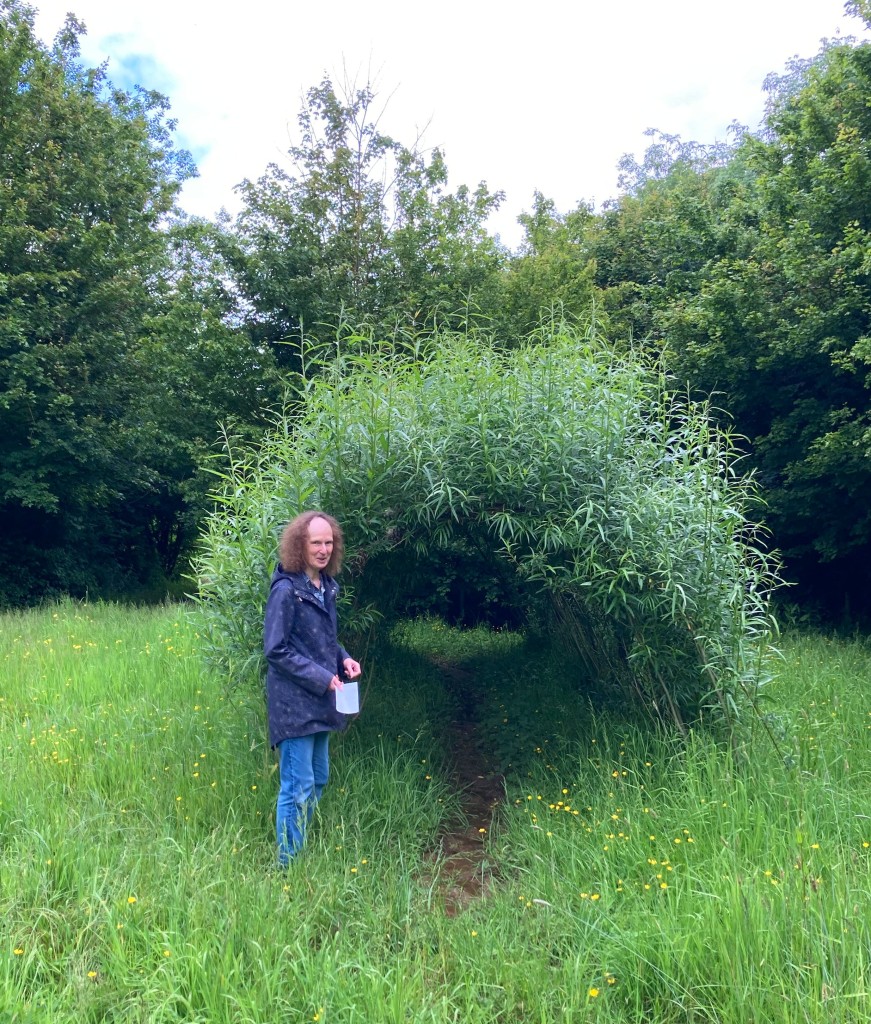
Also growing very well is the willow arch which, as can be seen above, is now a dense tunnel and looks great but, at some point in the near future, will need some attention.
WODC have been very busy since our last newsletter and have put down a hard surface all along the bridle path that runs along the edge of DPW South. This now provides good foot and cycle access from the new housing estate right through to Deer Park Road.
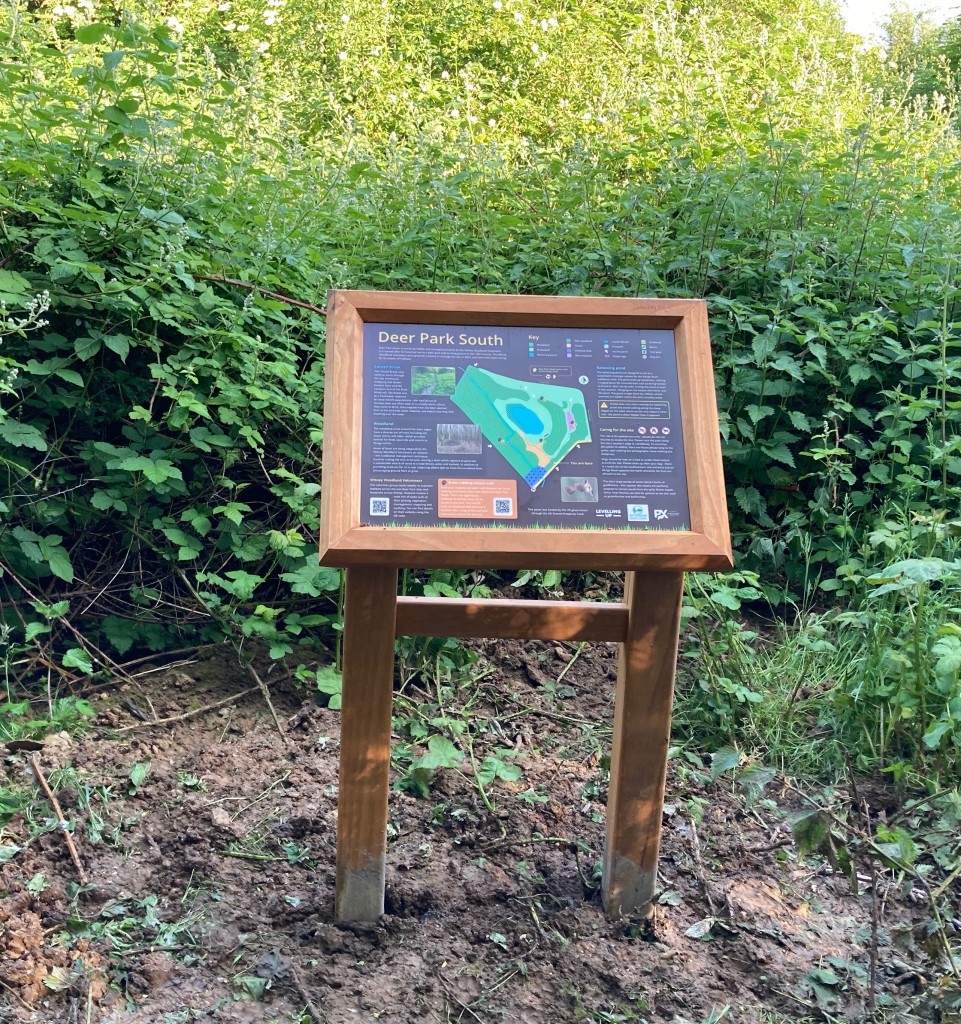
WODC have also put in place two information boards, one at the entrance to DPW South from Range Road and another from the bridle way, so things have progressed very quickly and all is looking good.
During the last few weeks the grass and general vegetation has grown incredibly fast and this has been clearly seen within our woods. The wild flowers are appearing and certainly the yellow rattle seeds sown last year have germinated, helping to control the grass in the areas where we want the wild flowers to bloom.

Below you can see foxgloves and a common spotted orchid.


The grass has grown very tall, but the orchids are just about managing to push through, although very difficult to count at the moment.
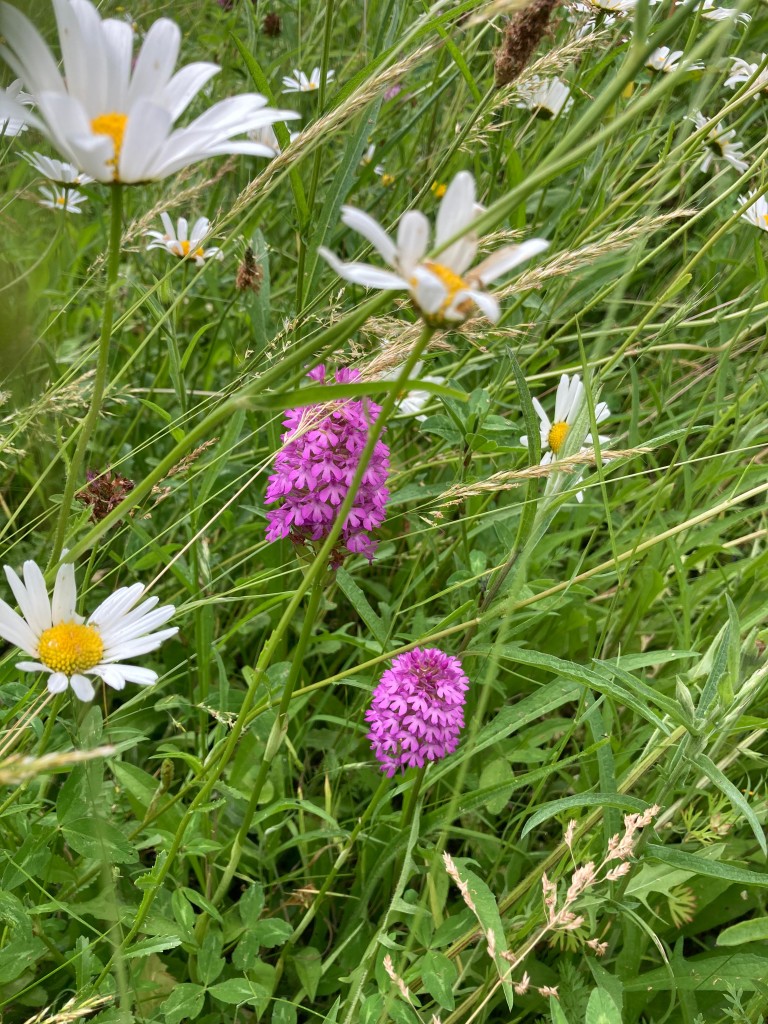
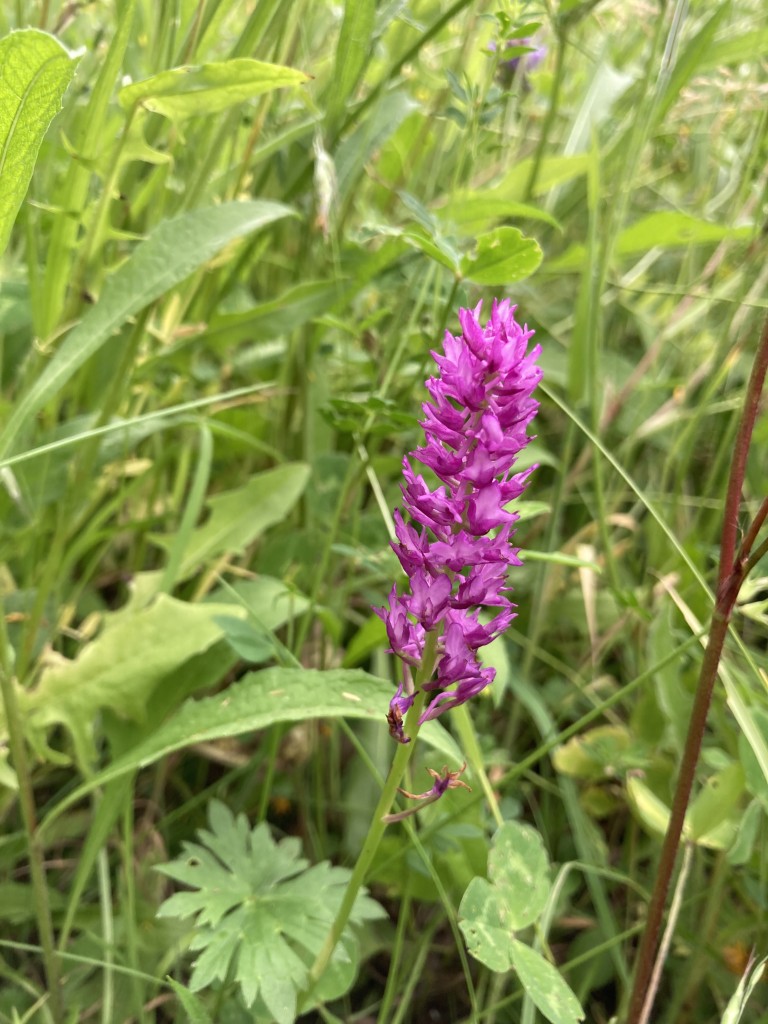
With the growth of vegetation over the last few weeks we have been very busy clearing paths, including the cemetery path off Tower Hill, the hospital path, the path from Newland to Cogges as well as the cycle path between the Burford Road and the West Witney Sports field.
Once again we have received positive comments from many passing local residents and I’m sure, with the sudden burst of warmer weather, there will be plenty more to do. If you see any paths that do need clearing then let us know.
May 2024
WWV Committee Meeting Update (02/05/2024)
- WWV AGM – Monday 24th June 2024
- Thank you to Finders Keepers of Witney for kind donation towards the First Aid courses
- WWV Insurance Renewal from the 22nd May 2024 agreed
- End of year finances completed and documentation out for audit
- Full tool inventory completed and new tool requirements identified
- Work on DPW South information signs and boards on-going
- DPW Nature Trail and new seat have been well received
Deer Park Wood (DPW) Update
At long last DPW is finally starting to dry out after what seems like months of rain. We have been busy continuing to spread wood chippings along the paths: with the weather starting to improve, we aim for increased accessibility. The central meadow area has been so wet that it has seen little use by walkers over the winter and early spring period, and as such has more or less remained untouched which will, hopefully, be good for the wild flowers that are starting to appear, as can be seen in the below photographs with bluebells, cowslips and wild garlic.
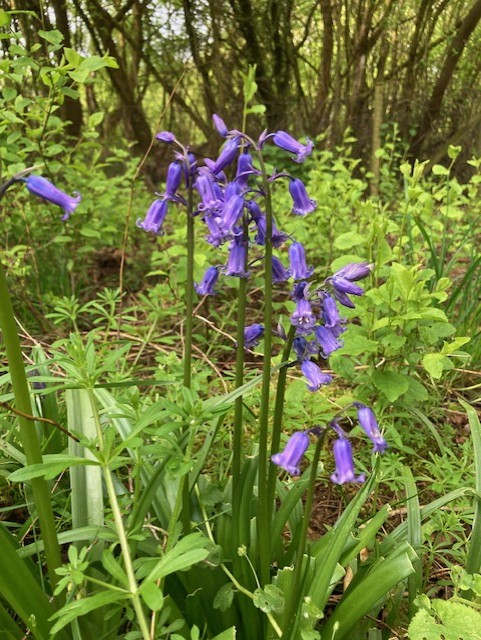
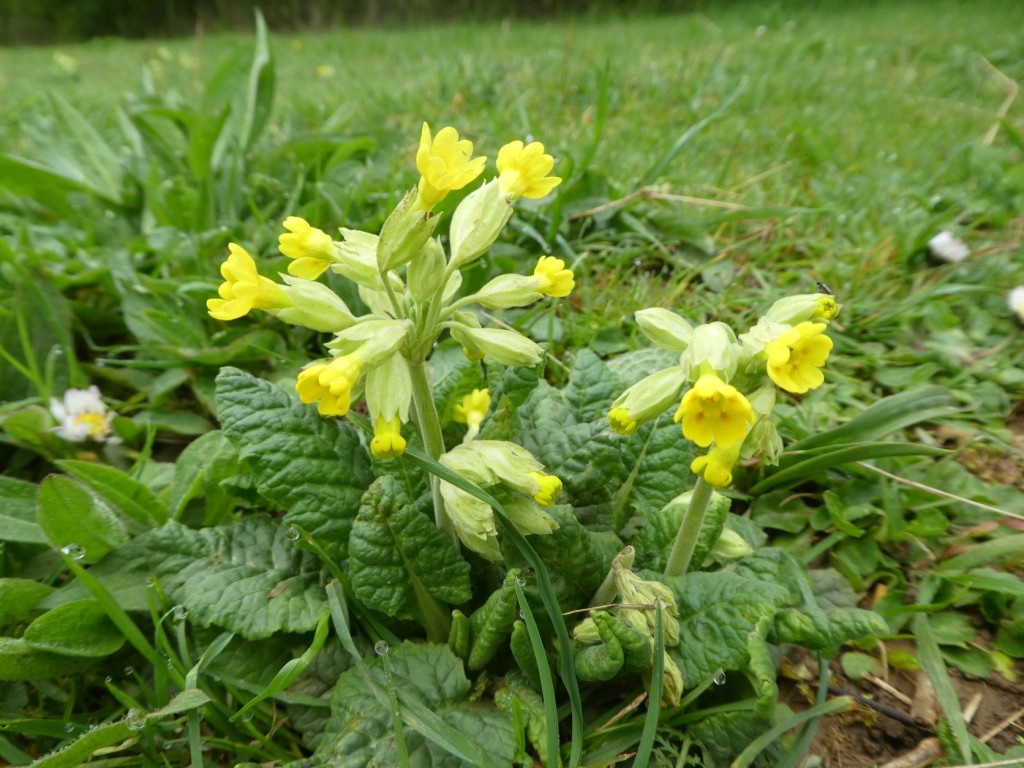
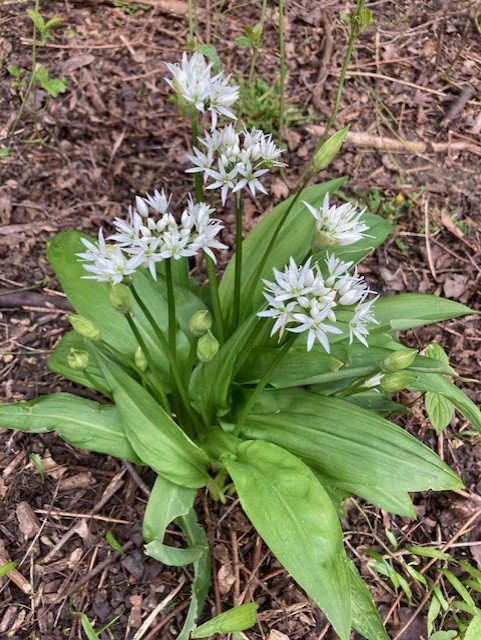
Spring in the wood
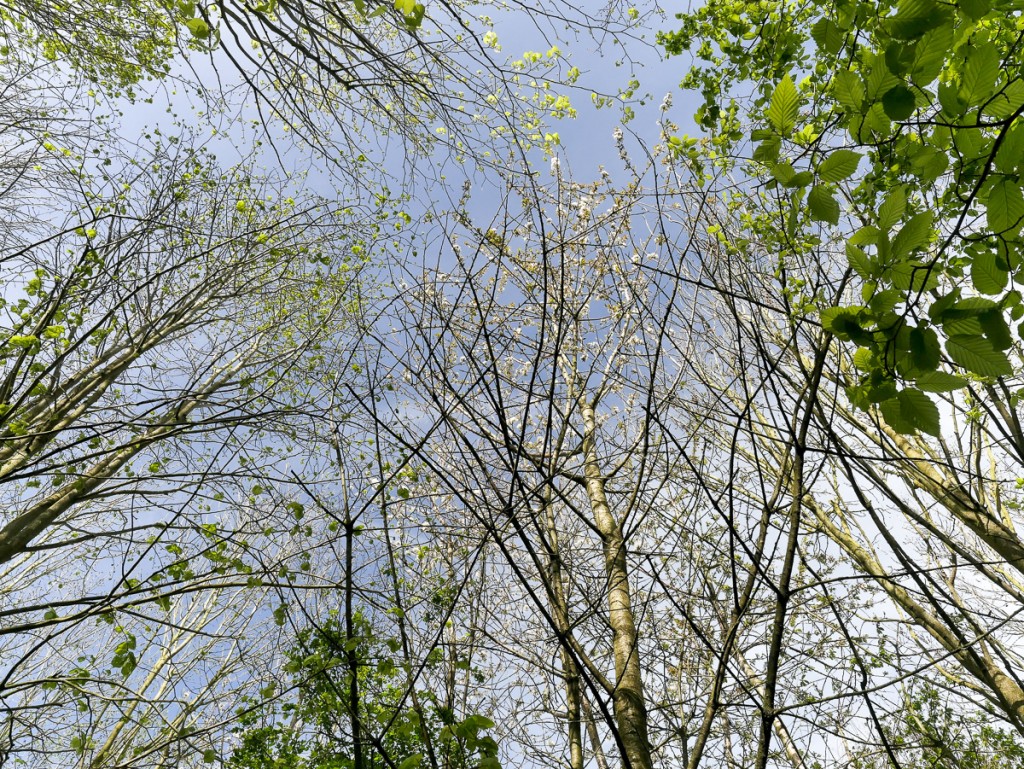
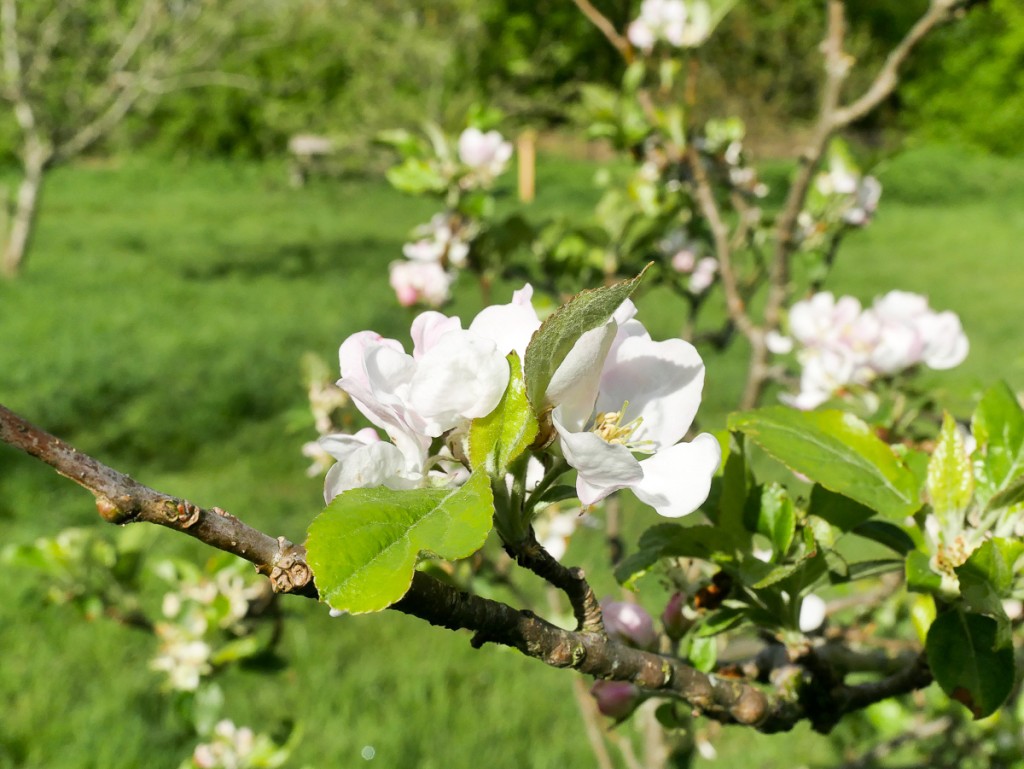
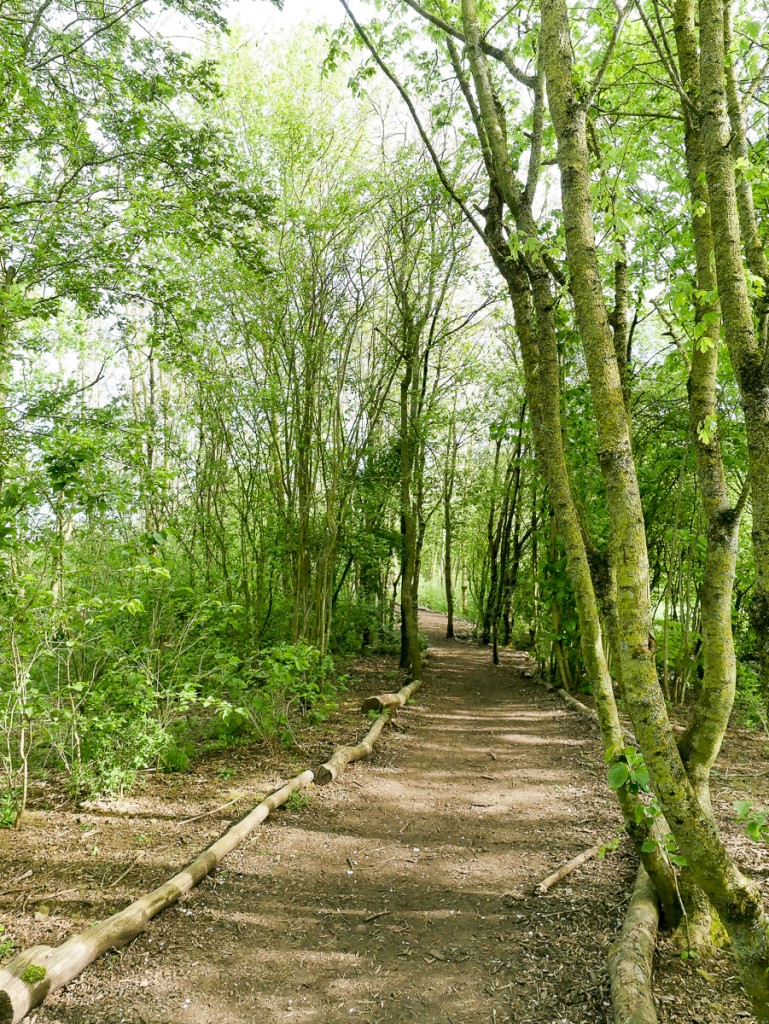
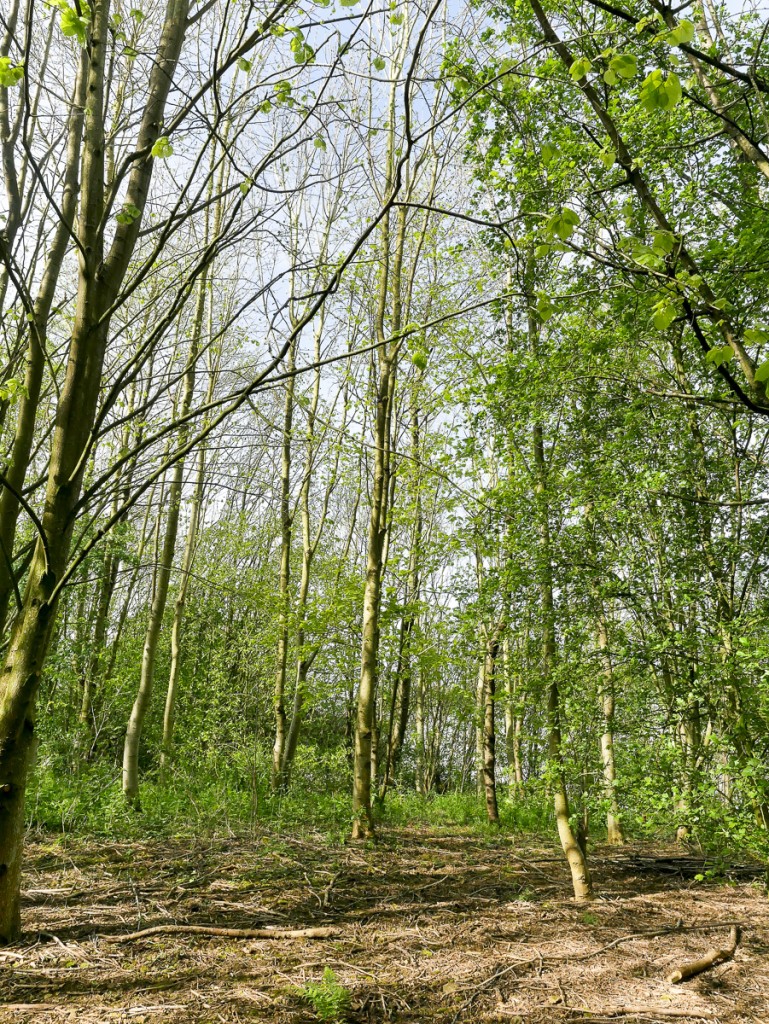
Birds and mammals are all very busy and we continue to have regular visits from muntjac, rabbits, squirrels, foxes and, of particular interest, the re-appearance of a badger. In previous years we have only ever seen a badger once a year, but for the first time this year we have seen a badger return several times to DPW. It will be interesting to see whether the badger now becomes a regular visitor.
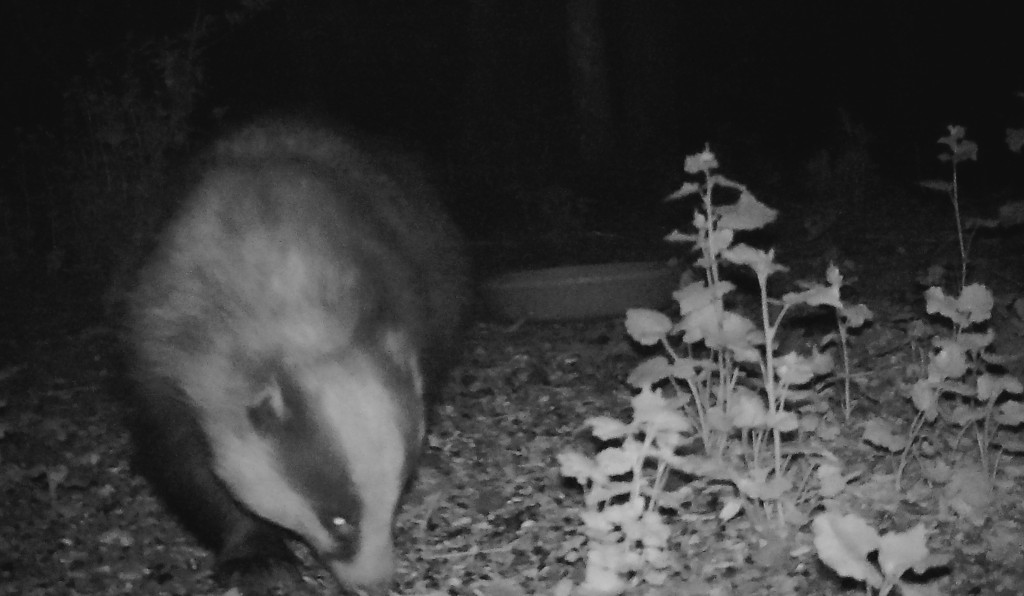
In the photograph below, you can see a rabbit, squirrel, magpies and a pheasant, which is also a rather rare visitor to DPW, unlike the magpies, where on one occasion 17 were seen together.
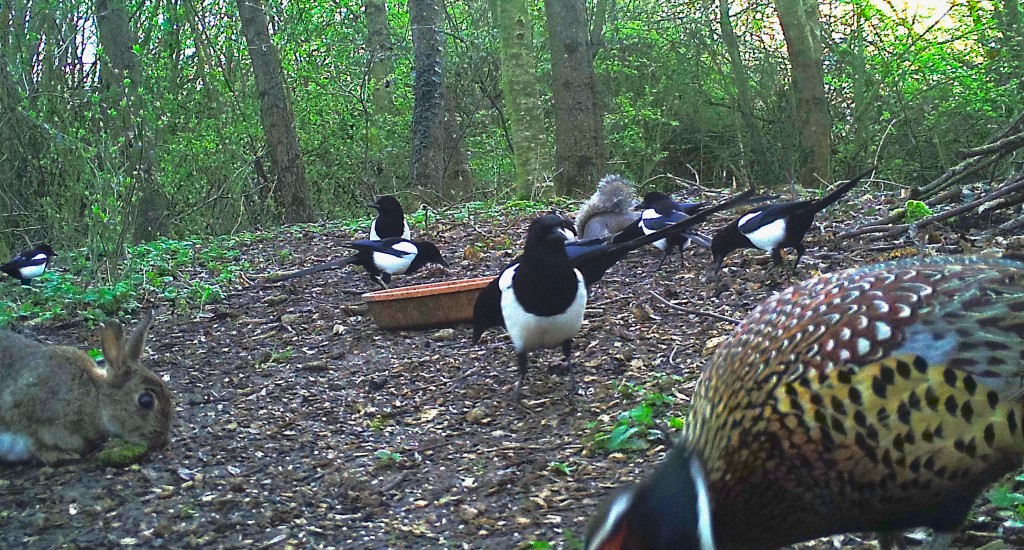
Below is our muntjac buck, who has done exceptionally well to survive, bearing in mind that part of his rear lower left leg is missing. The muntjac is now a regular visitor to DPW and has been spotted during daylight hours as well as at night and has been a visitor to the wood since June 2022. Unfortunately our long time resident doe (One eye and no tail) has not been seen now since February.
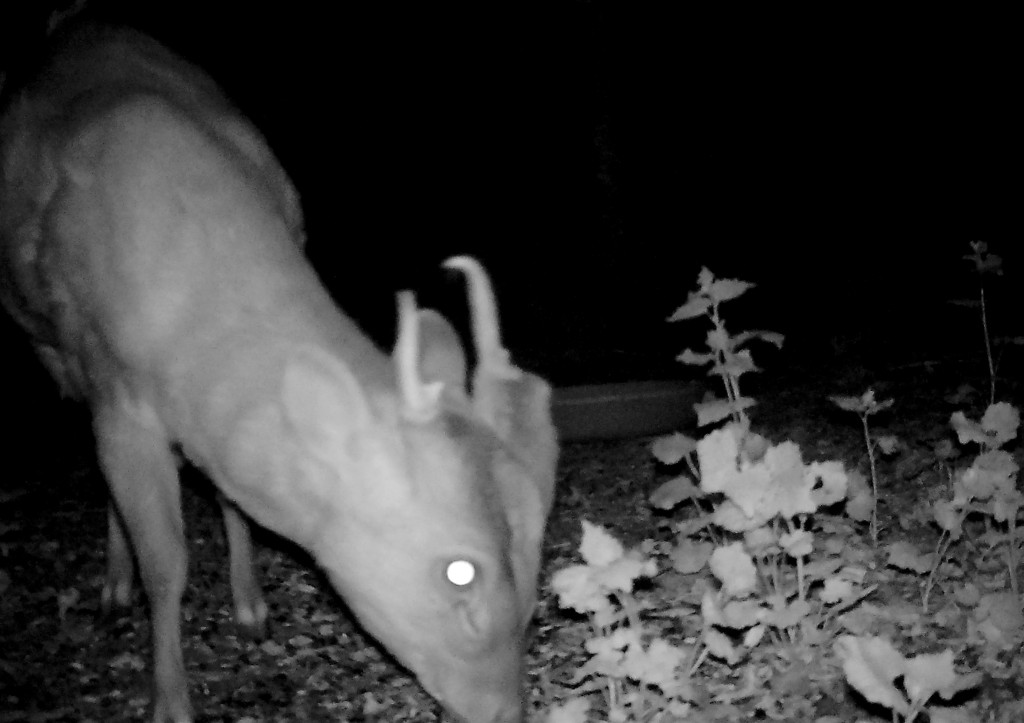
Deer Park Wood South Update
We have also been working hard within DPW South and in particular clearing the Colwell Brook of litter and vegetation which was hampering the flow of water.
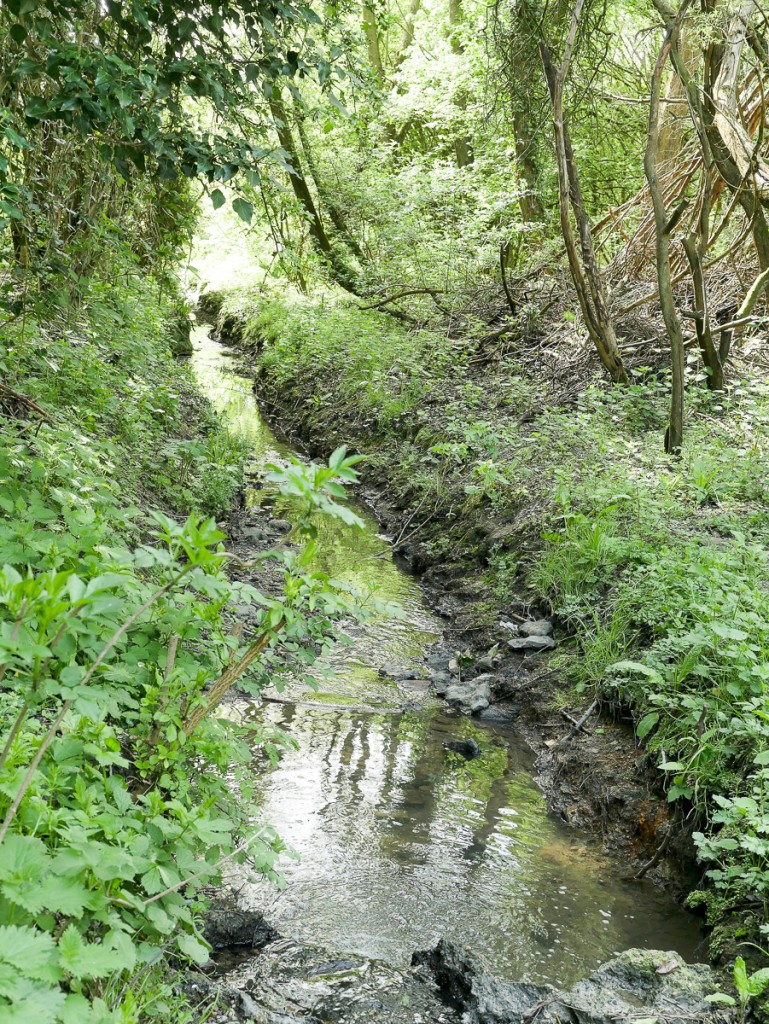
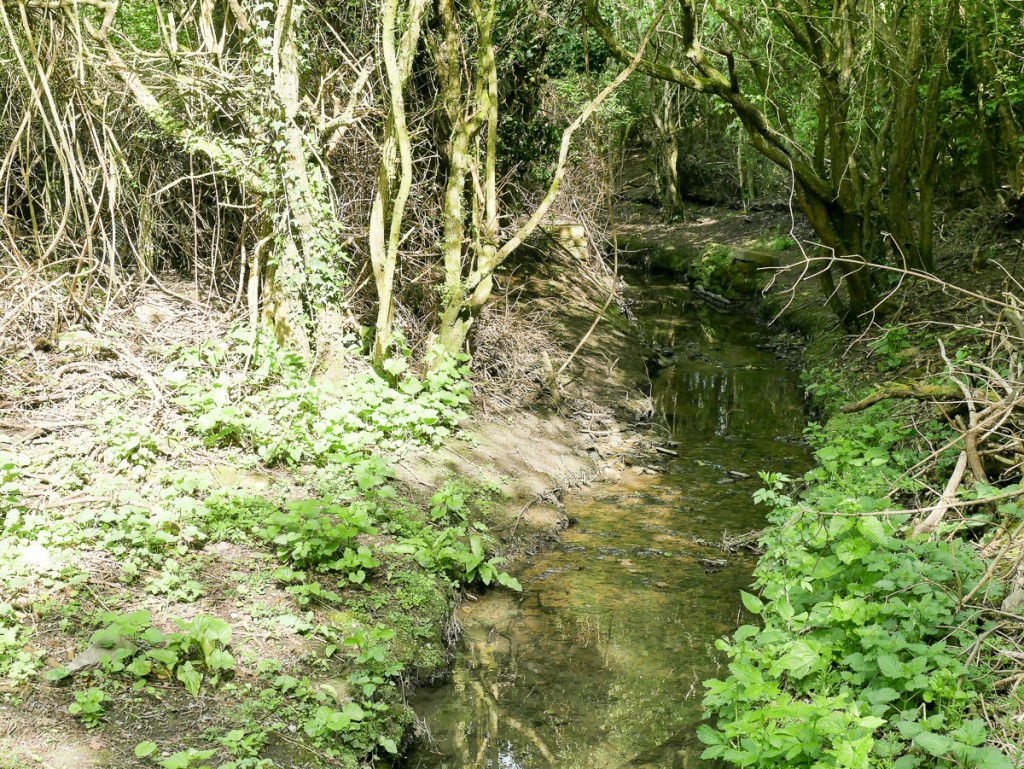
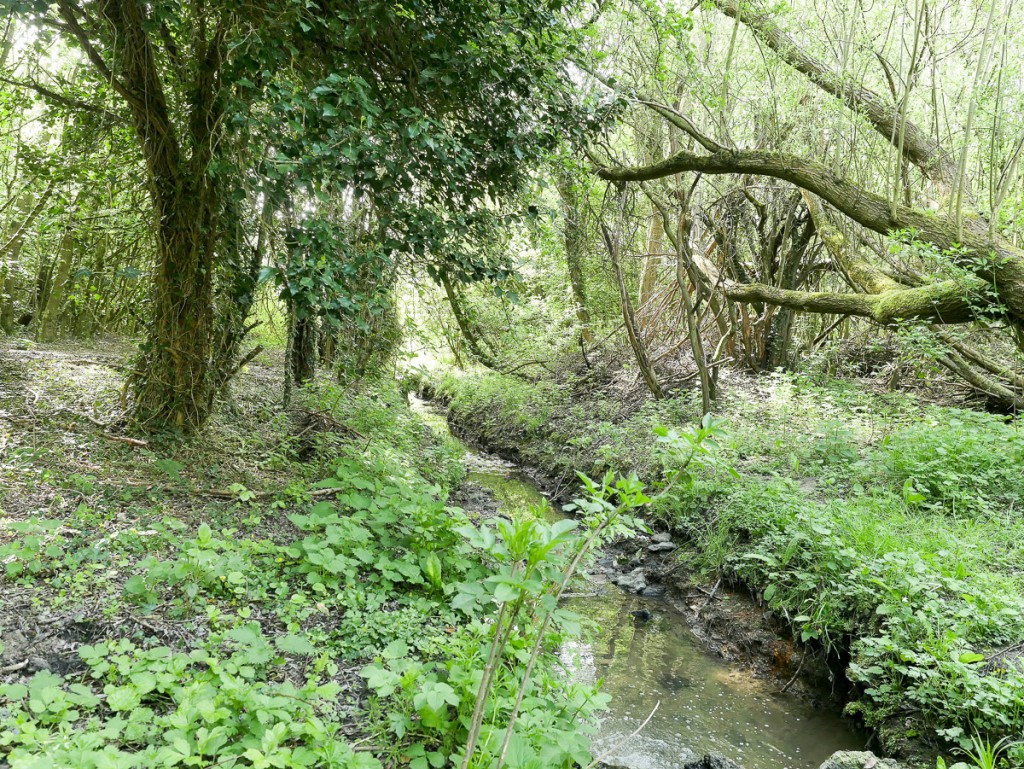
The two new bridges are settling in…
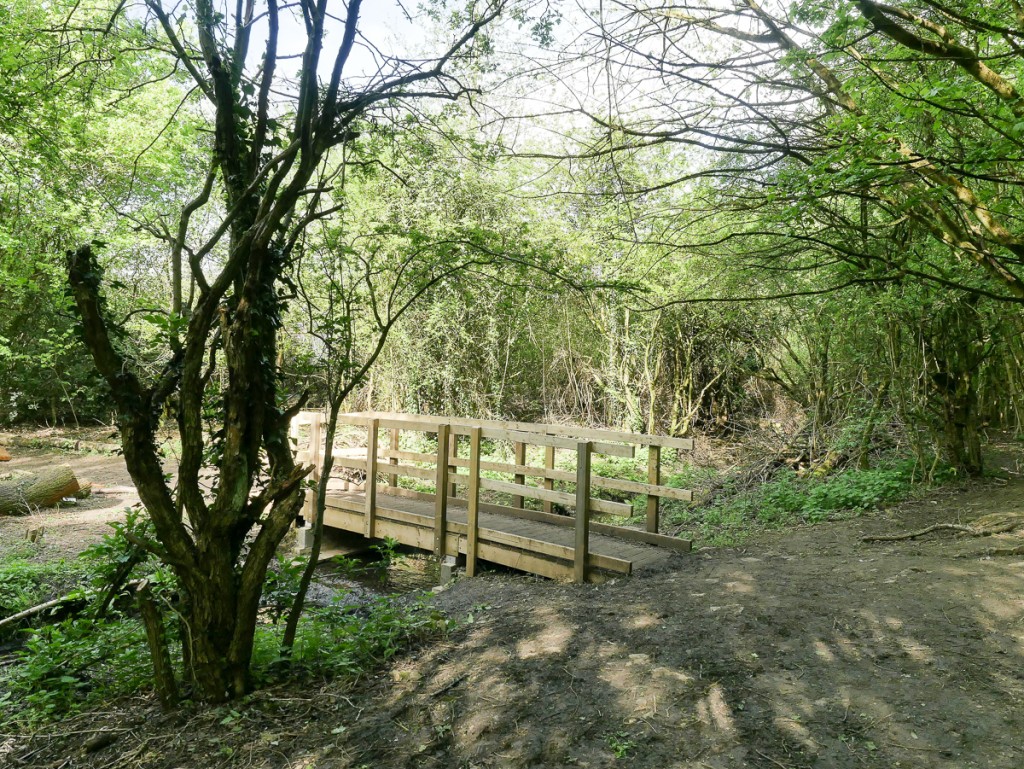
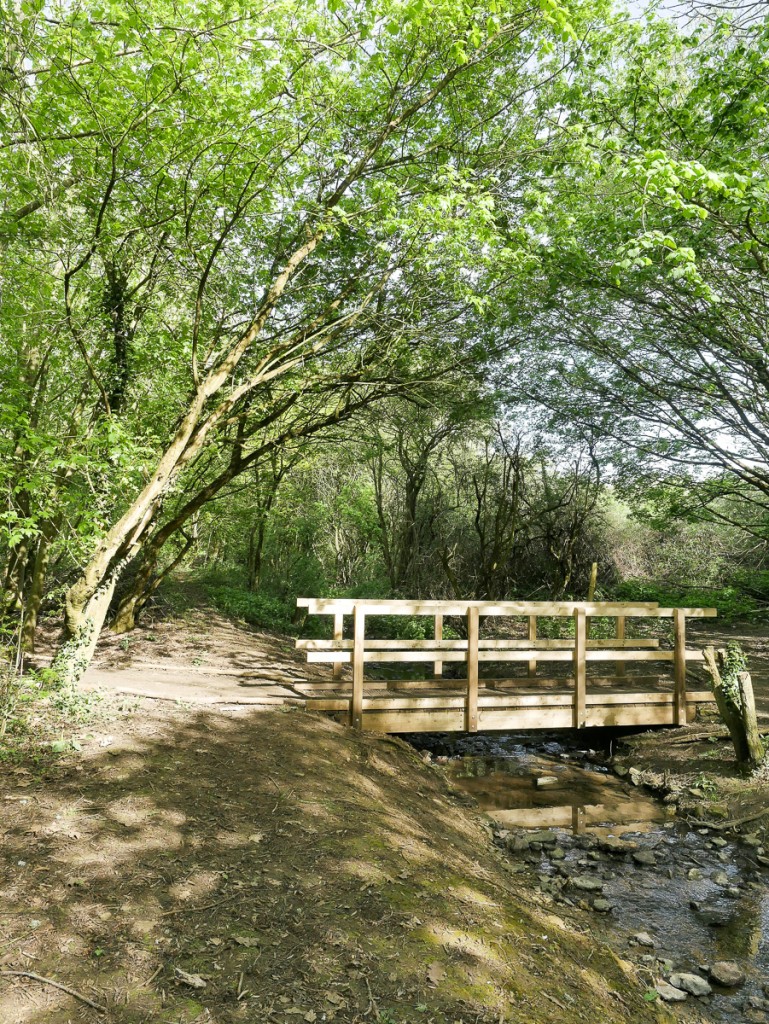
We have continued with the moving of logs from DPW to DPW South in order to demarcate the paths, which makes a big difference. The new seat and nature trail seems to be well appreciated. It was also good to learn that Windrush Primary School have also been making the most of the new nature trail.
More images of April in Deer Park South
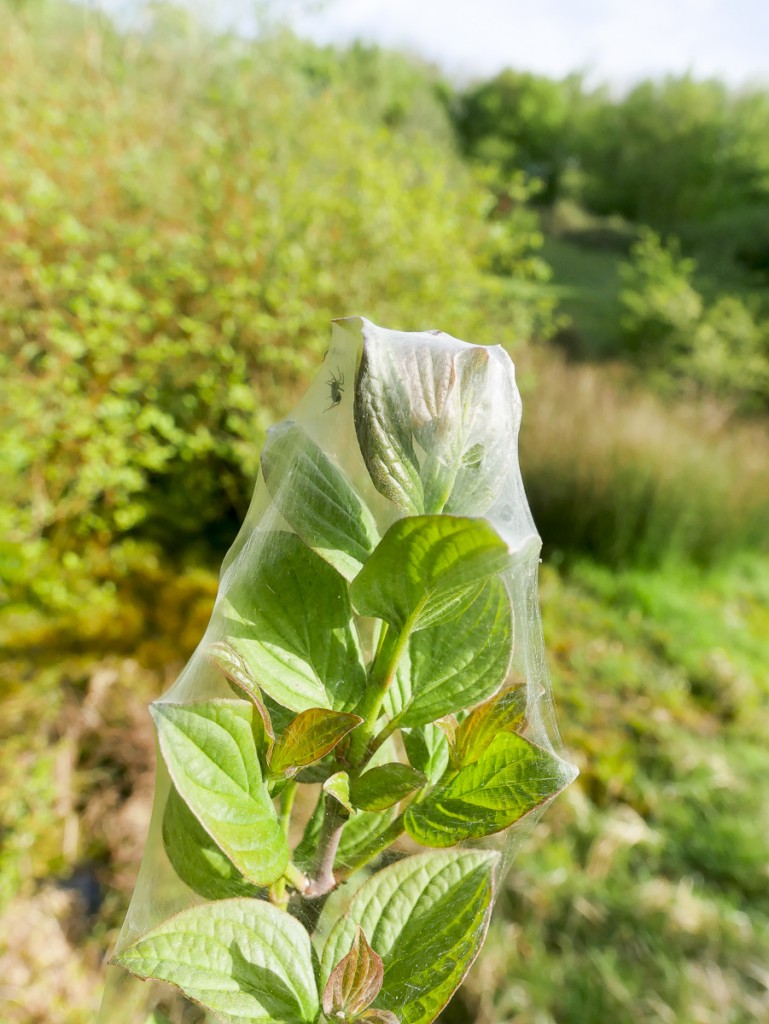
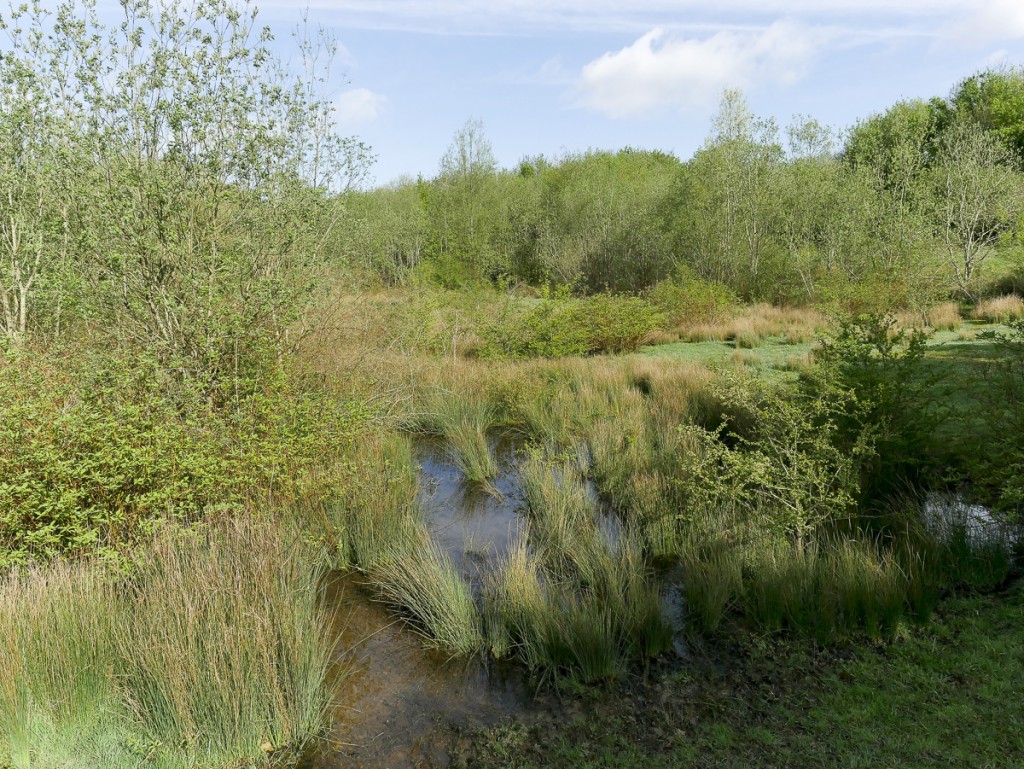
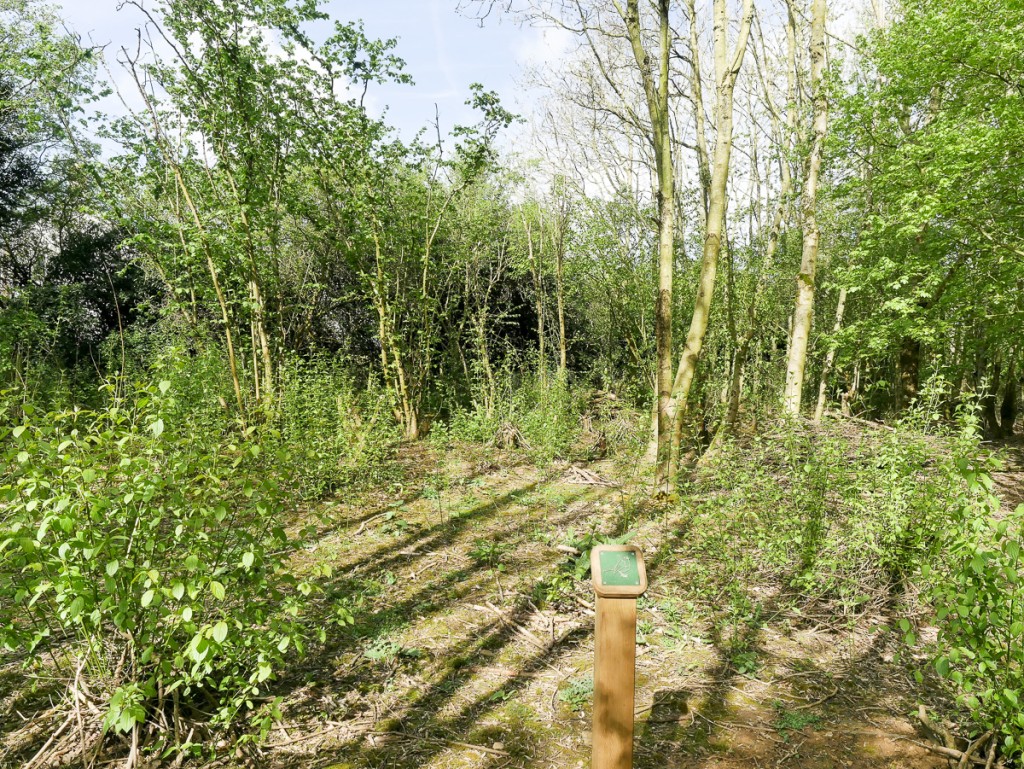
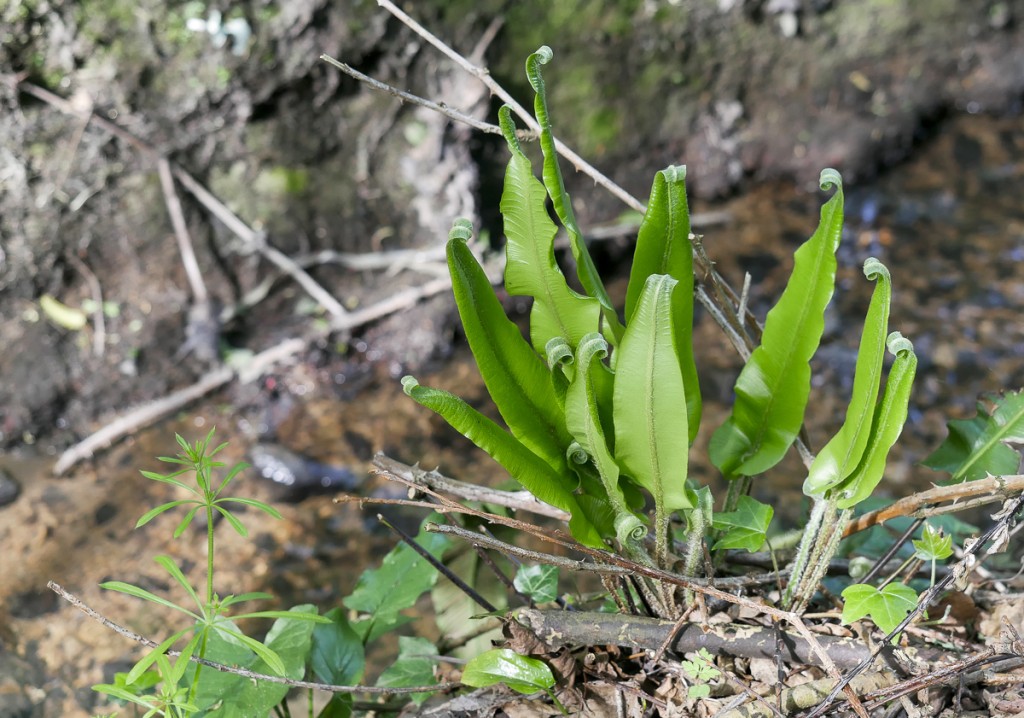
Member Andrew Coles, as Chair of WODC, has arranged a charity fund raising quiz night for Friday 17th May 2024 (18.30hrs at the Council Offices at Woodgreen in Witney). Andrew’s chosen charities for his time in office are WWV, Witney and West Oxfordshire Foodbank and West Oxfordshire Community Transport, so do please try and support this event, and a big thank you to Andrew for all the support he has given to WWV over the years.
One of our long time supporters within WODC, Nick Dalby, is also leaving. Nick has been a huge help to WWV over many years and we will miss his support and guidance, we thank him for all his assistance over the years and wish him well for the future.
March 2024
WWV Committee Meeting Update (14/03/2024)
• Nature trail installed within DPW and DPW South
• New seat located within DPW South overlooking the dip
• Following a recent training day, we now have three newly-qualified First Aiders
• Inventory of WWV tools to be undertaken
• A new approach to welcoming prospective members to be considered
• Welcome to three new members
Deer Park Wood (DPW) Update
The Southern and Scottish Electricity contractors have, at long last, finished their work under the high voltage power lines within DPW. They cut the trees under the cables every few years to avoid any contact. This has unfortunately not been done for some time, and the results are pretty drastic.
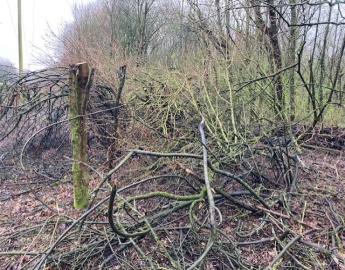
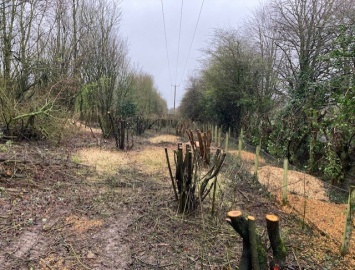
There are now numerous piles of chippings to move and some brash still to cut up into habitat piles. Clearing up after the contractors has certainly kept us busy over the last few months, and the cutting down of trees has changed the feel of the east side of DPW considerably.
We have, however, been able to utilise the wood chippings by spreading them on the paths, and this has also allowed us to create many more wood and habitat piles. A quick count indicates that in excess of 500 trees have been cut down to a level of three feet or so by the contractors – certainly the most severe cut we think we have ever seen. Hopefully in a year or two the growth from the low stumps will provide a lovely green cover to act as a barrier between the wood and the road.
Spring is now well on its way and aconites have been and gone, we have seen a lovely display of snowdrops within DPW at all the entrances to the woodland walk and now a few daffodils and crocuses have appeared.

The wood is still extremely wet due to the heavy rain, so the central grass area has not seen much use. We have, however, spotted a whole array of fungi appearing throughout the wood which has kept us busy trying to identify the various different varieties spotted by our volunteers – see below.
Mammals
our regular visitors are still appearing despite the cutting back we have seen on both the east and west side. We have our muntjac doe, who has only one eye and no tail: she has been with us now for some years; a new muntjac doe (who we think is pregnant and possibly the youngster of the one-eyed doe), and a muntjac buck, who has a missing hoof and who has been sighted around the wood for at least the last couple of years. They seem to be all together as a family, and we will wait and see if a fawn appears in the near future. We have also seen a fox, which is almost certainly one of the three cubs that we saw last year – and we have had our yearly visit from a badger, who wandered through the feeding area in February.
(You can explore our resources page which has links to monthly databases of flowering plants and bird/mammal sightings.)


Fungi
At the end of February, there were numerous examples of Scarlet Elf Cup visible beside the east path along the Deer Park Rd side of the wood. They appear between December and April but as of a few days later, they all seem to have disappeared!
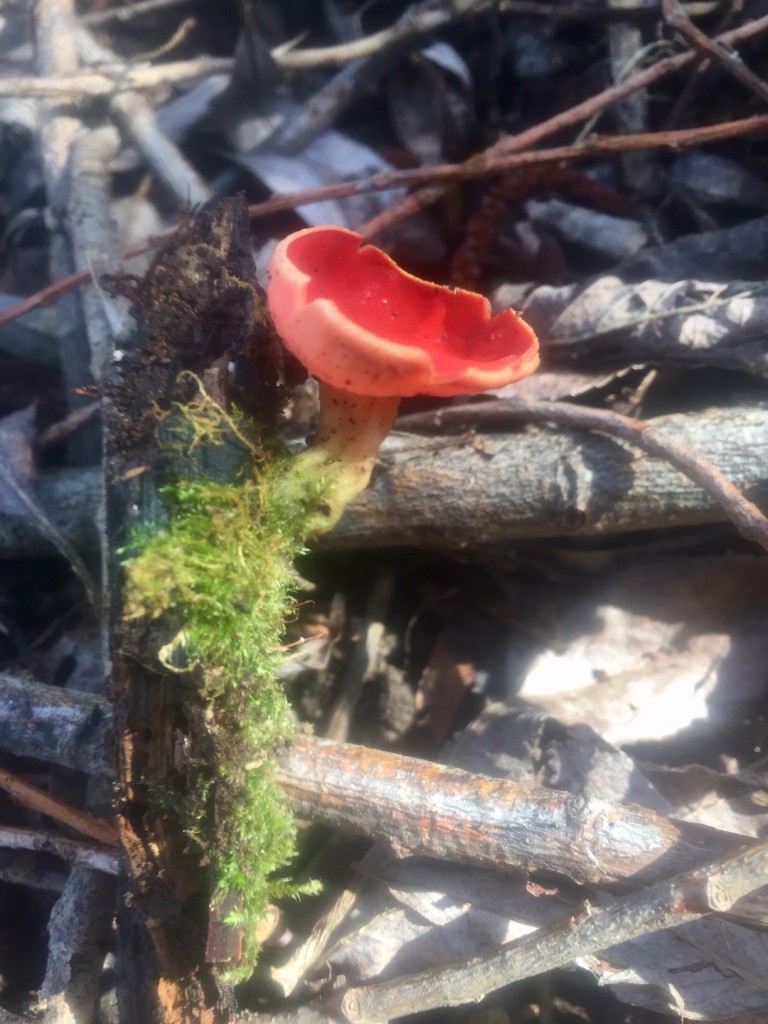
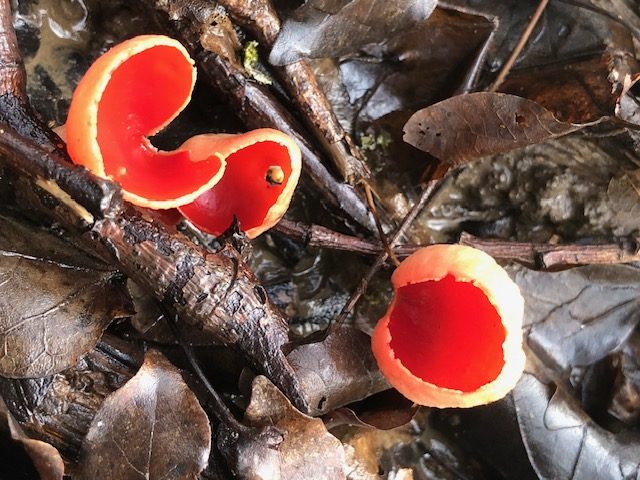
According to Galloway Wild Foods’ website, they are edible and sought after, so maybe a local forager has gathered them. They are a striking colour which makes them very visible – too visible for their own good! Elf cups are ascomycetes, which means that they shoot their spores into the air. They typically appear in humus rich, damp, deciduous woods with plenty of fallen wood, preferring moss covered sycamore, willows, beech and hazel.
…and another species:
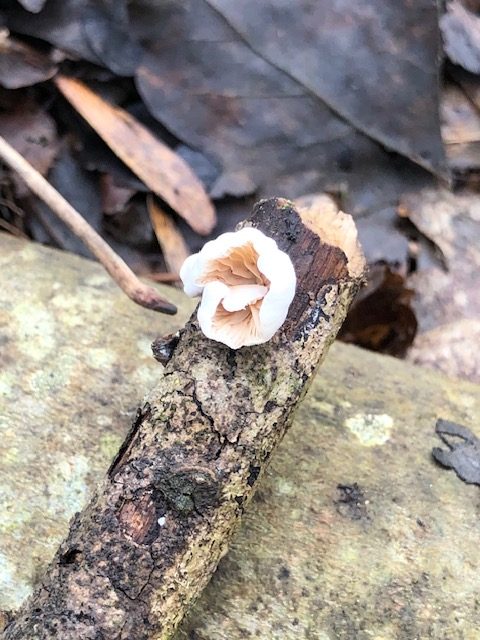
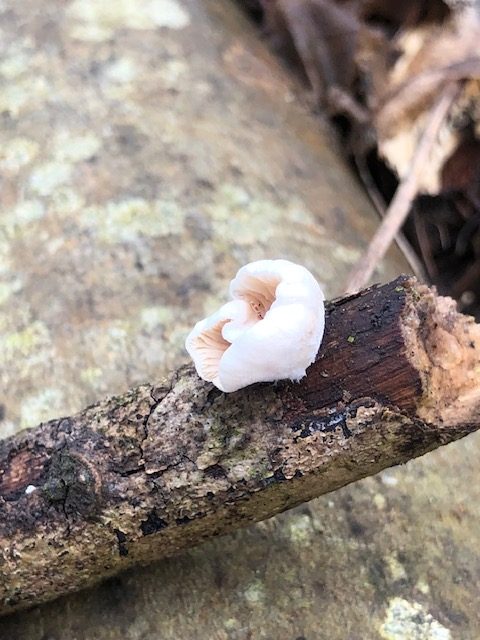
…which was initially though to be Crepidotus variabilis:
https://www.first-nature.com/fungi/crepidotus-variabilis.php
…but with further enquiries we are now assuming is Crepidotus cesatii – (Roundspored oysterling). This excellent website shows in more detail:
https://www.first-nature.com/fungi/crepidotus-cesatii.php
DPW South
– has seen a new substantial path constructed, giving good access from the bridleway.
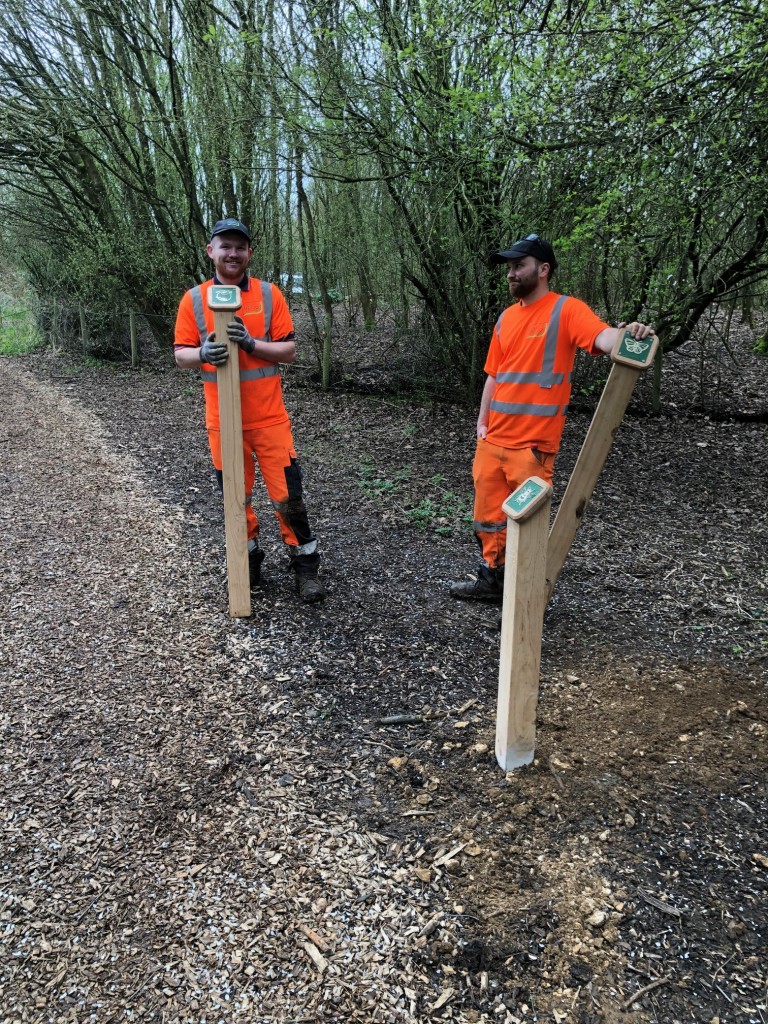
Very recently a new seat has been installed at the end of the path, giving a good view over the dip for bird watching and, of course, somewhere to have a rest.
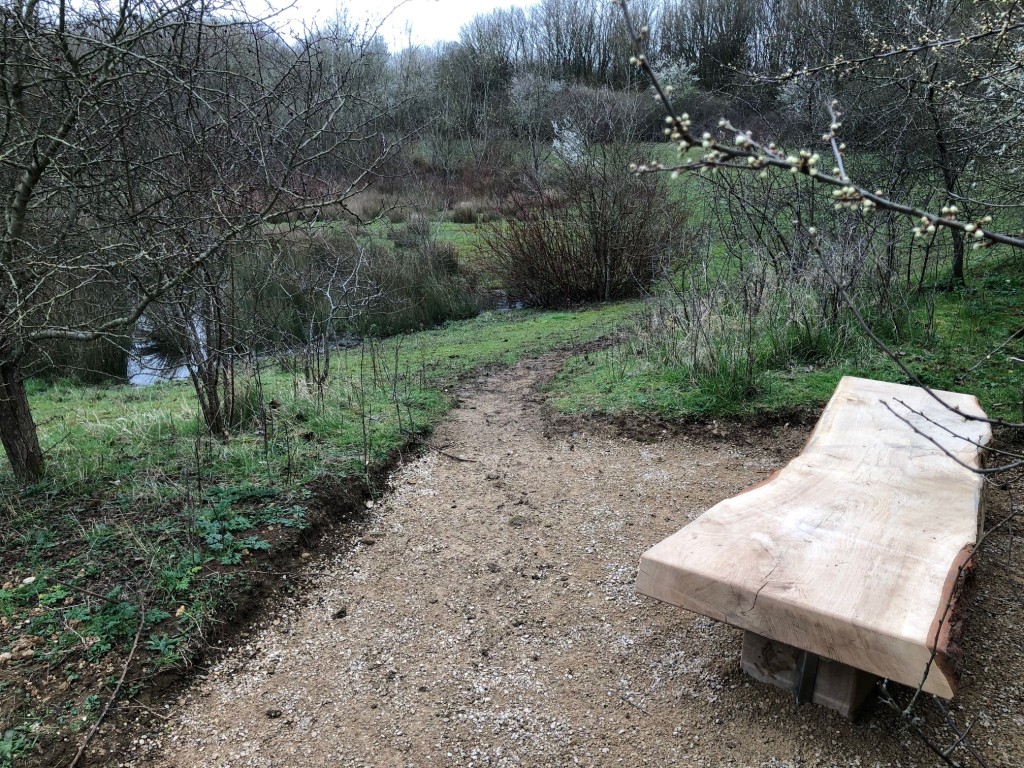
A nature trail in both woods has also been created. This was all undertaken by contractors on behalf of WODC and WWV. We will be adding more information about the development of DPWSouth this spring.
Nesting boxes
We completed the annual survey of our bird boxes: their condition was checked and any old nests removed ready for the new occupants to take up residence.
On the west side we have 34 boxes, of which 13 are old wooden ones and 21 are RSPB Woodcrete boxes. A total of 29 were opened: 13 had old nests, which indicates a 45% occupancy during the last nesting season. One contained a clutch of 8 abandoned eggs and another the sad sight of the skeletal remains of 4 chicks. Who knows what may have happened to the parents which cut short the lives of their chicks…
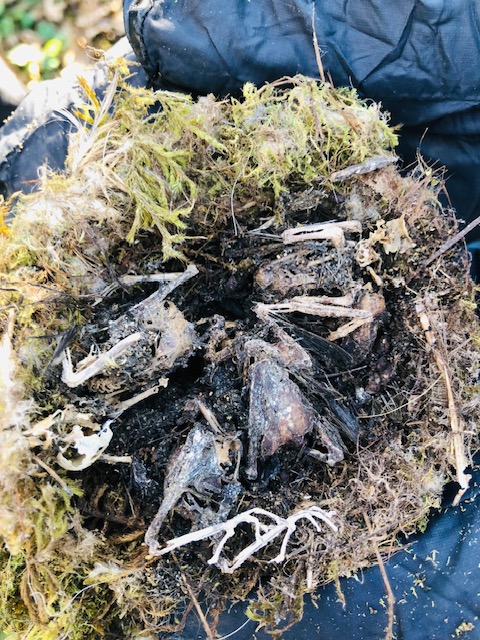
Two of these boxes were already being visited by blue tits so we left them undisturbed.
On the east (Deer Park Road) side, the story was quite different. Here we have 19 boxes of which 7 are wood and 12 Woodcrete. A total of 18 were checked, and 14 were found to have been used: a surprising 78% occupancy. This side of the wood is close to the noise of Deer Park Road traffic and, being a much narrower strip of woodland subject to the over-exuberant clearing of trees under the adjacent power line, is far more visually open to the road. Despite that, it would seem to be more attractive to nesting birds.
Our Woodcrete boxes all have 32mm entry holes, reinforced against the best efforts of squirrels and predatory birds. This size is suitable for tits, sparrows, redstarts and nuthatches: only the first two species have been seen in the wood. The nests are often built from moss with the occasional addition of some brightly coloured fabric, probably scavenged from balls lost by dog walkers.
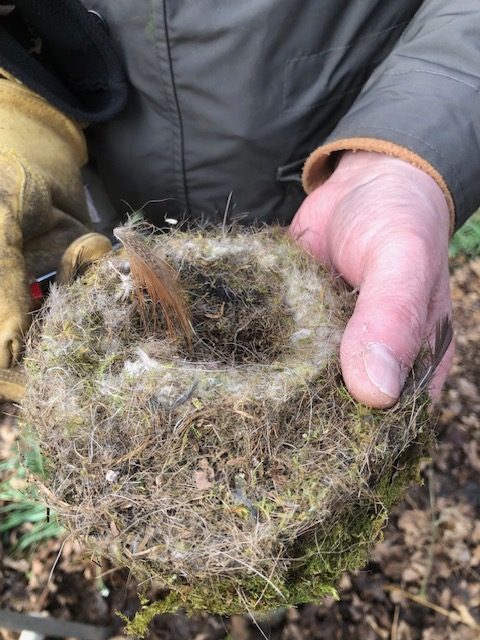
Other WWV Activity
This year WWV have also been busy collecting litter from across Witney as this is the best time to do so, before the vegetation grows up and hides the rubbish until next winter. We have visited the Witney hospital path, Marriotts car park and all areas around the hospital, Loom Lane, the old Bathing Place and surrounding areas and of course in and around DPW and DPW South, including the bridleway. Around fifty large bags of rubbish were collected in all along with four shopping trolleys, pipes, and numerous other items that people didn’t want, so well done to all involved – but of course it’s such a shame that people drop so much litter…
